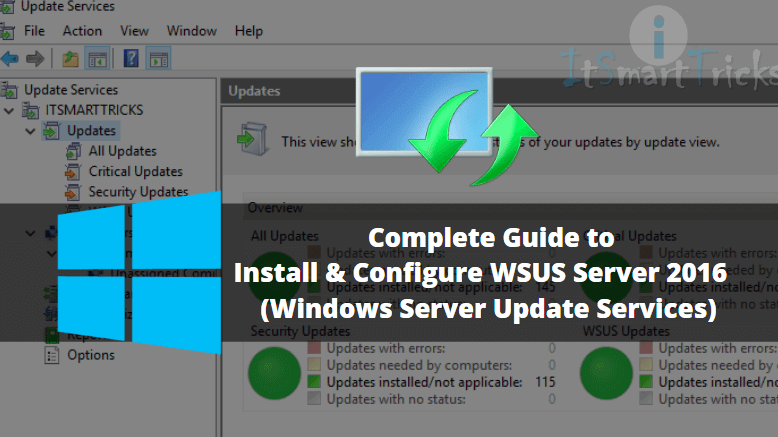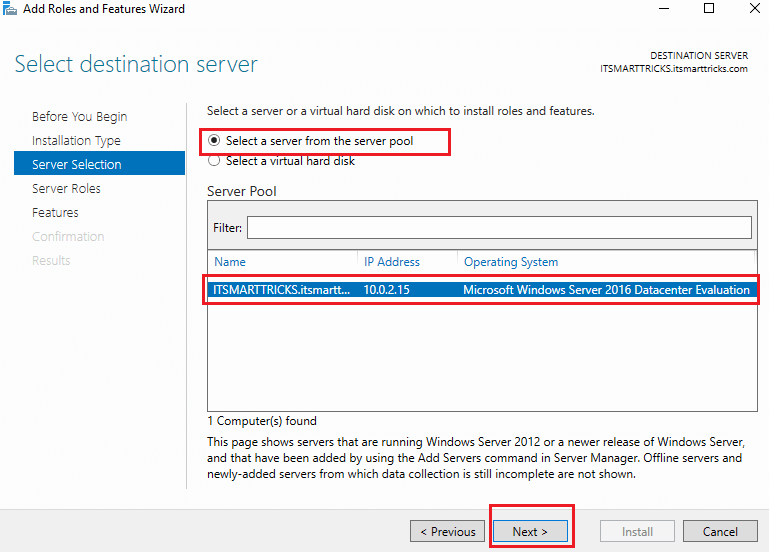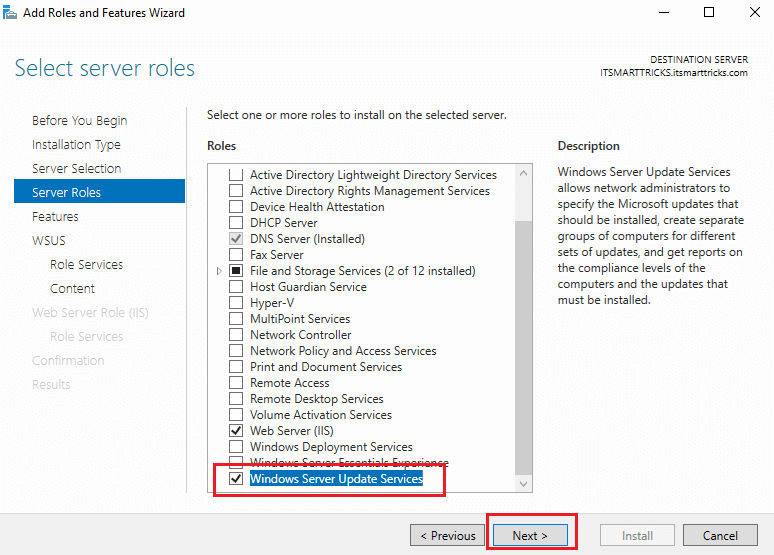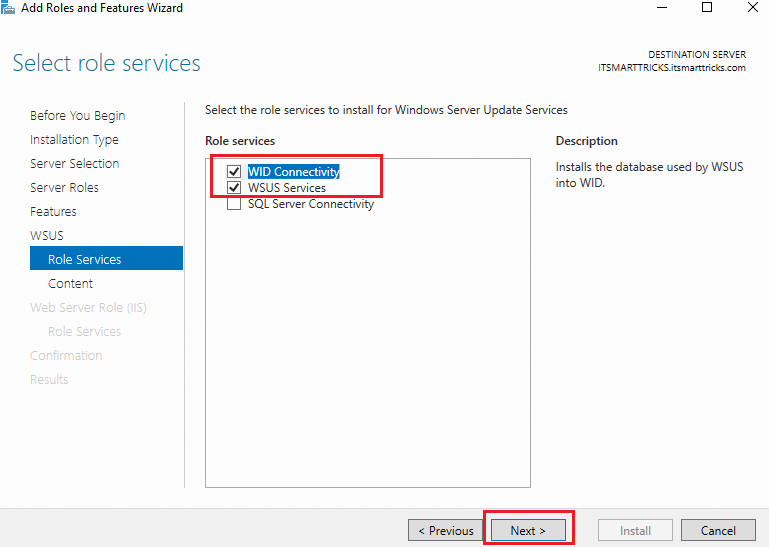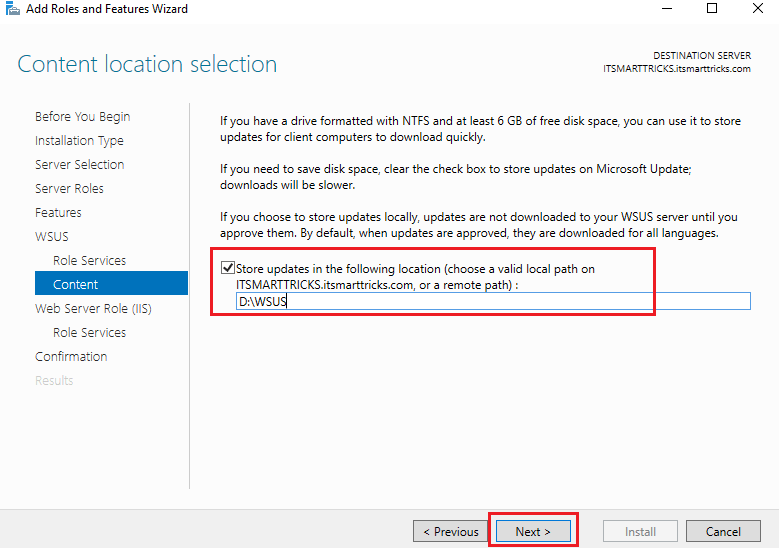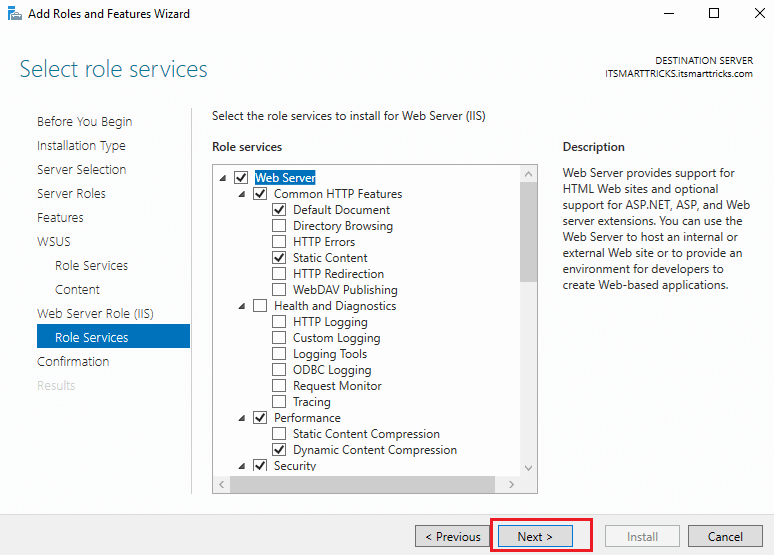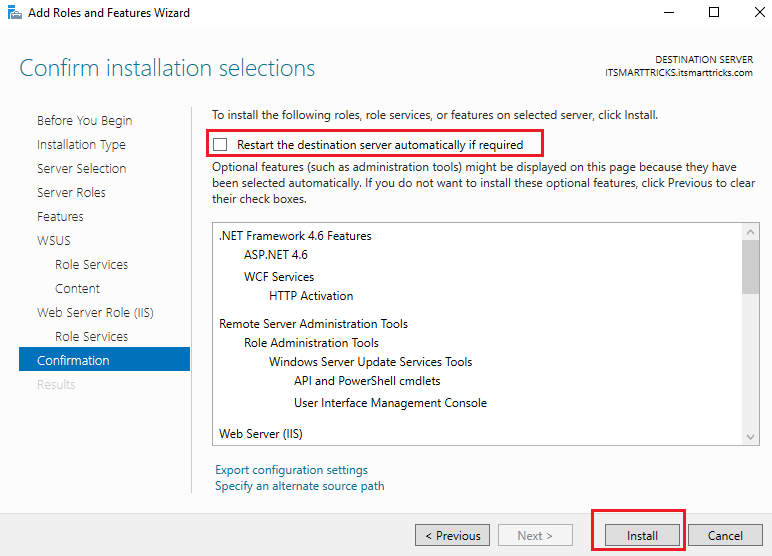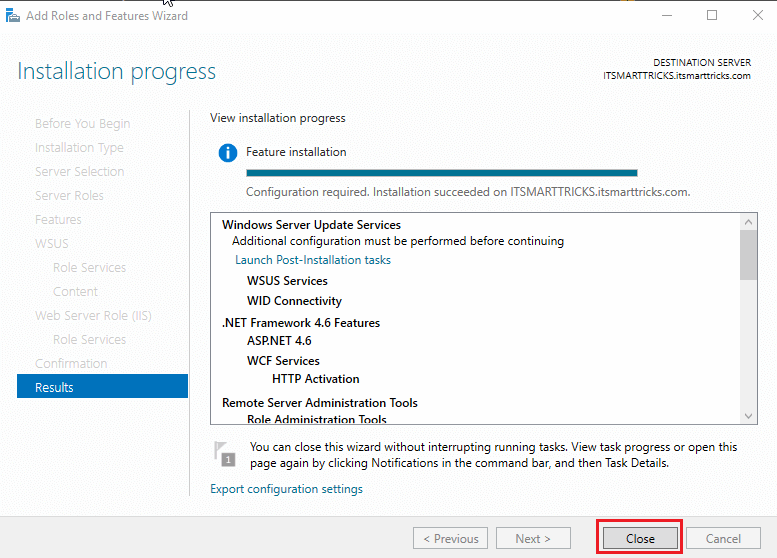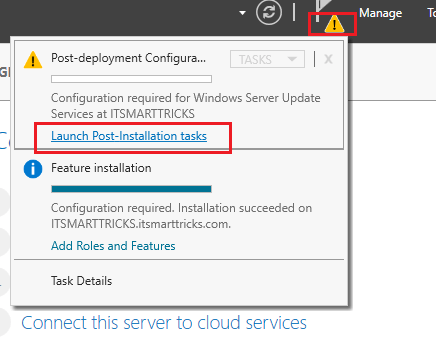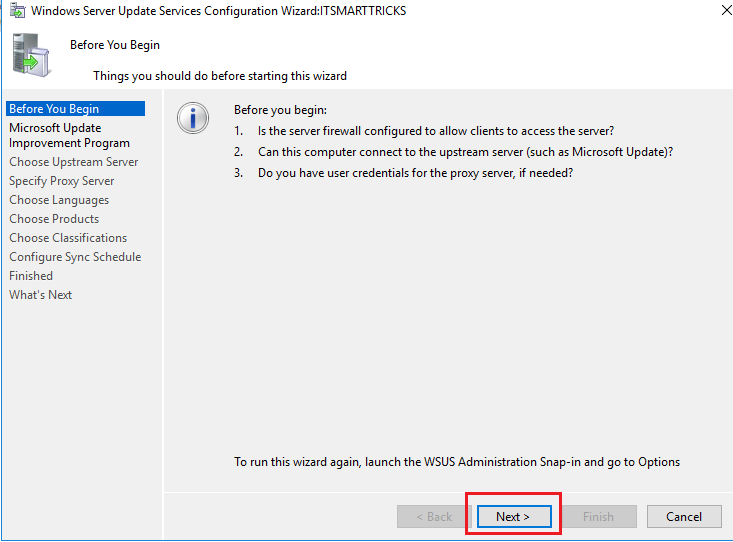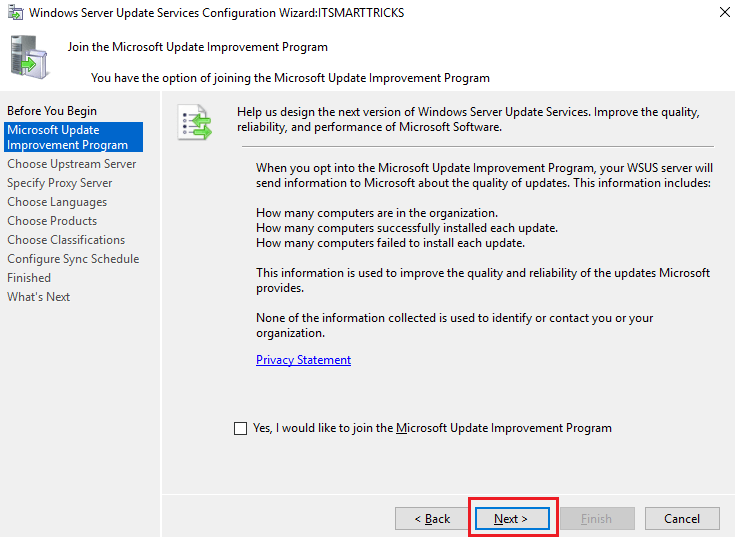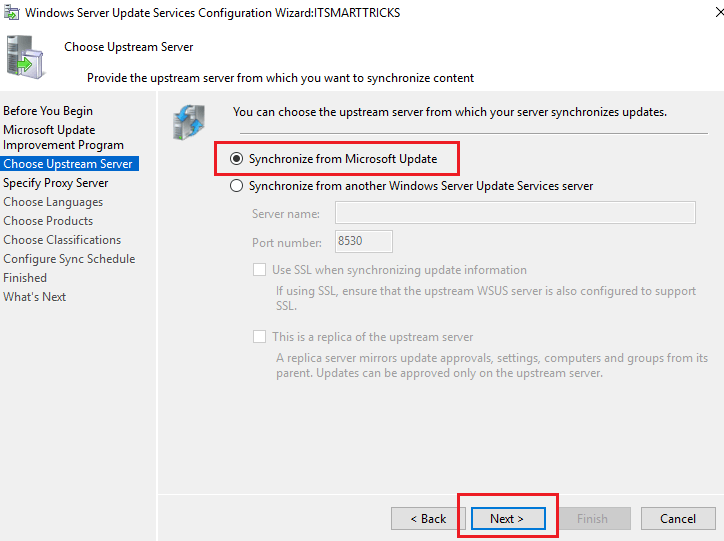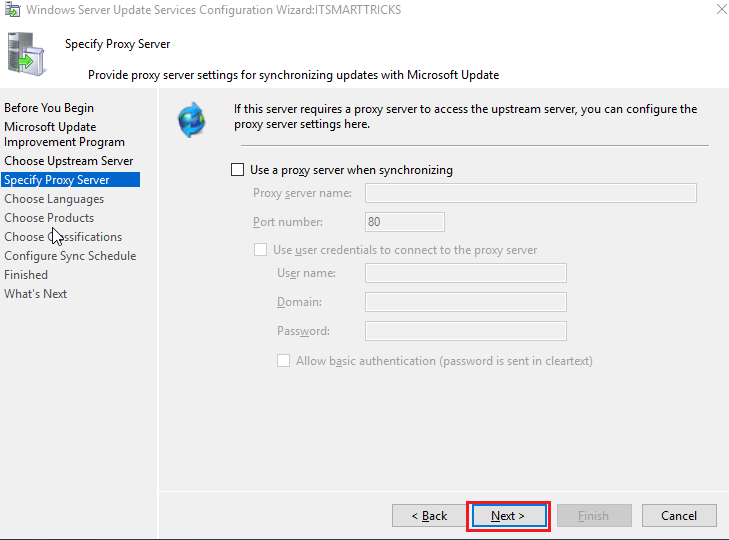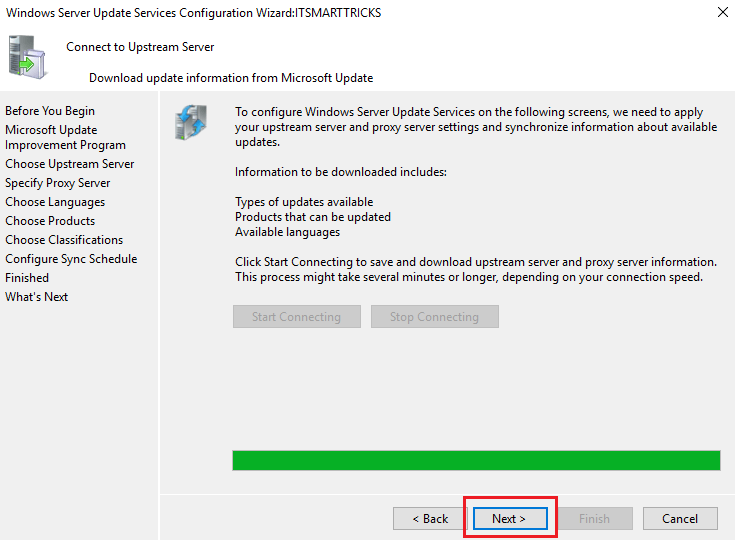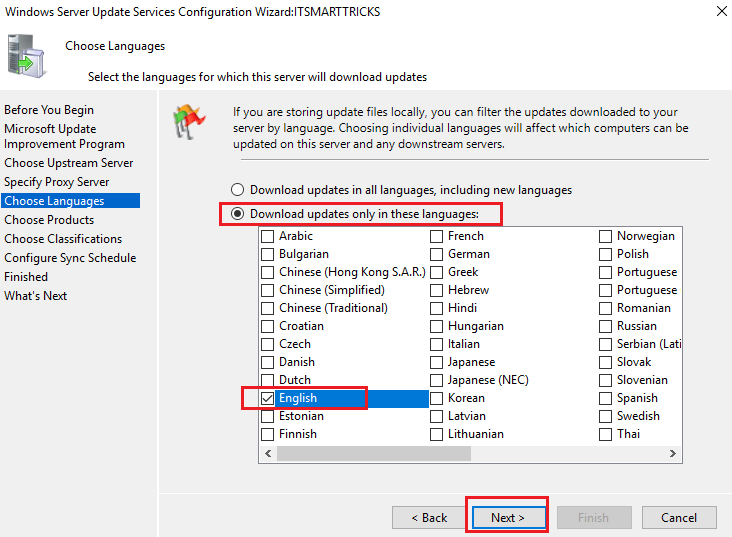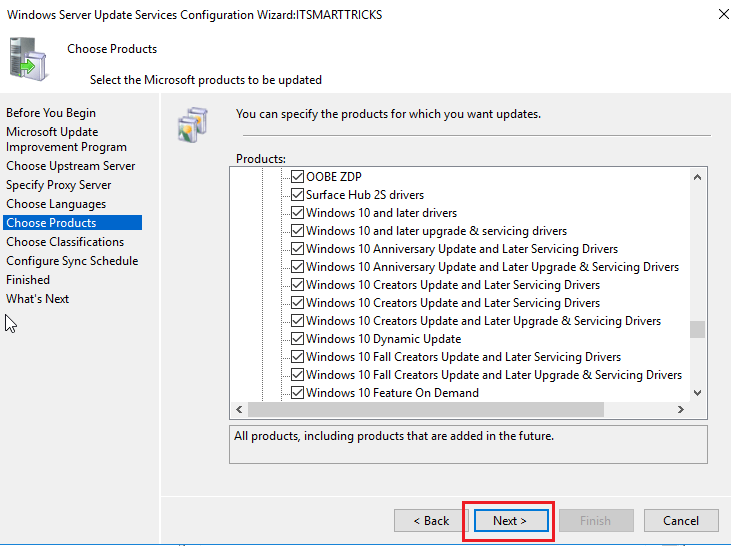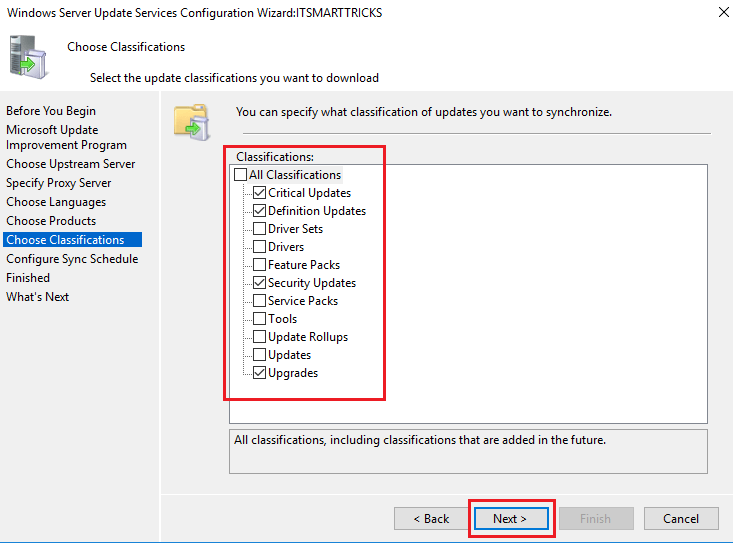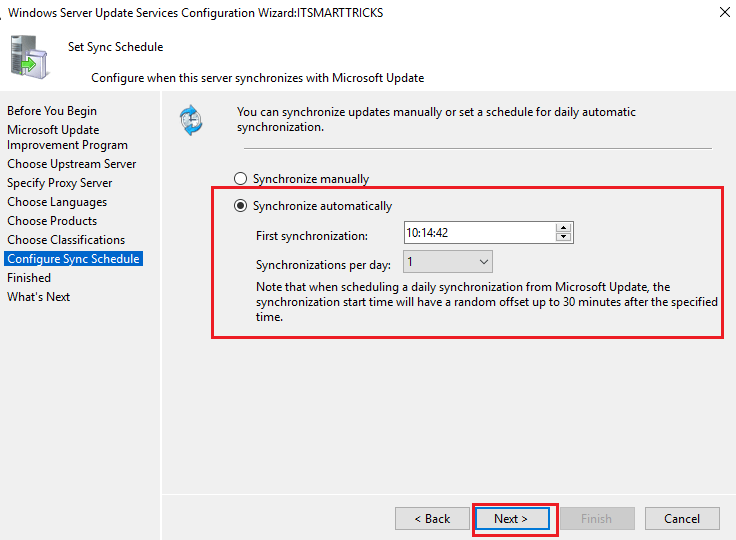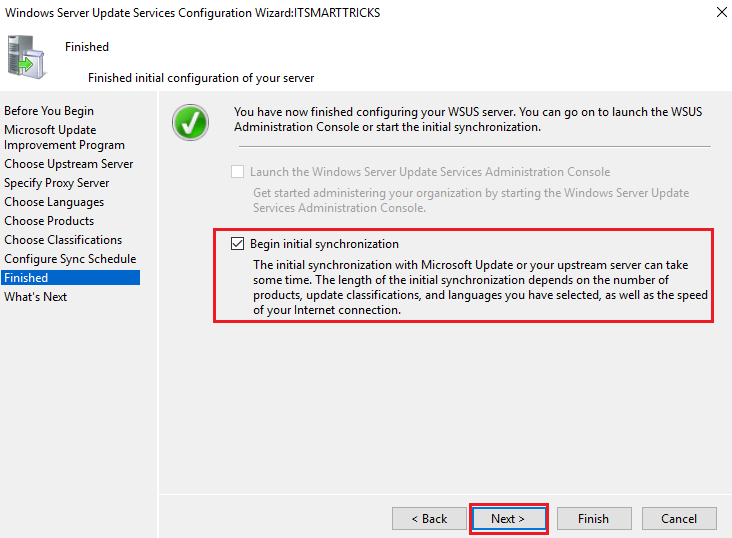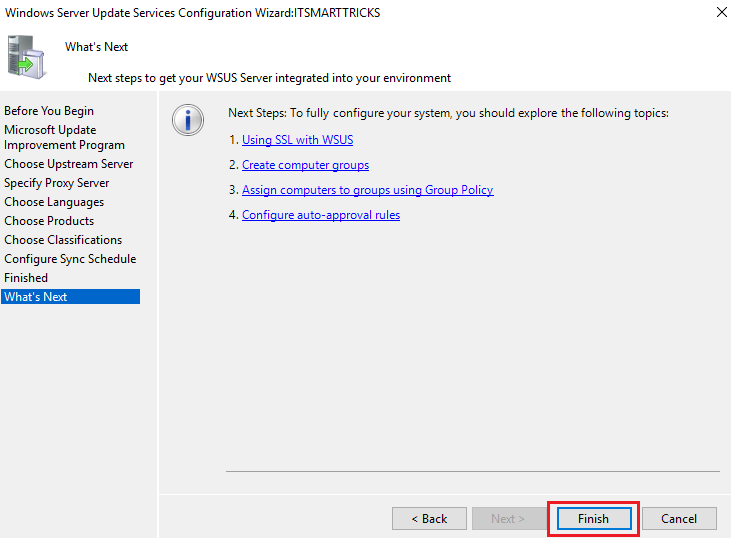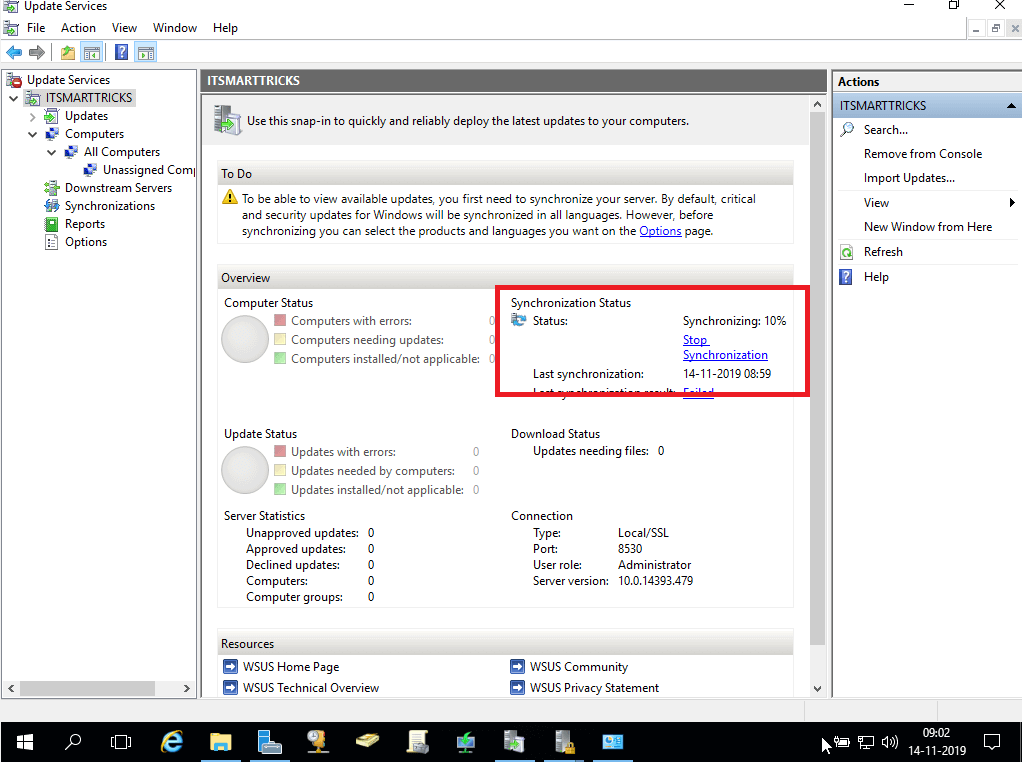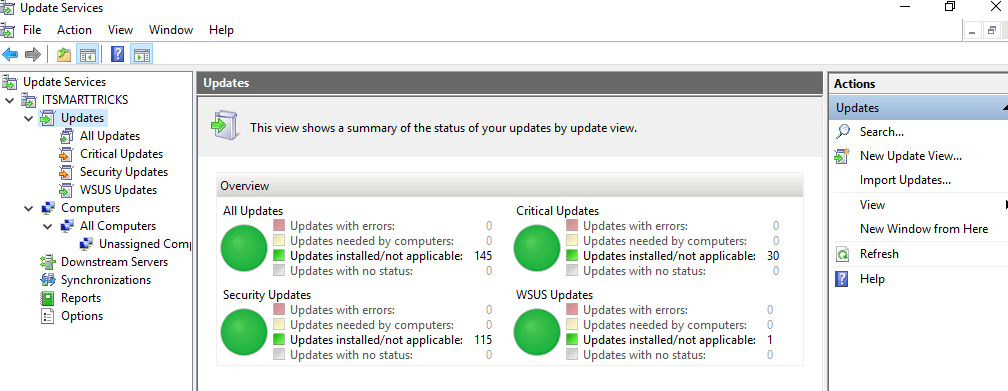С помощью сервера обновлений Windows Server Update Services (WSUS) вы можете развернуть собственную централизованную систему обновления продуктов Microsoft (операционных систем Widows, Office, SQL Server, Exchange и т.д.) на компьютерах и серверах в локальной сети компании. В этой статье мы рассмотрим, как установить и настроить сервер обновлений WSUS в Windows Server 2019/2016/2012R2.
Содержание:
- Установка роли WSUS в Windows Server
- Начальная настройка сервера обновлений WSUS в Windows Server
- Установка консоли администрирования WSUS в Windows 10/11
- Оптимизация производительности WSUS
Как работает WSUS?
Сервер WSUS реализован в виде отдельной роли Windows Server. В общих словах сервис WSUS можно описать так:
- После установки сервер WSUS по расписанию синхронизируется с серверами обновлений Microsoft Update в Интернете и скачивает новые обновления для выбранных продуктов;
- Администратор WSUS выбирает, какие обновления нужно установить на рабочие станции и сервера компании и одобряет их установку;
- Клиенты WSUS в локальной сети скачивают и устанавливают обновления с вашего сервера обновлений согласно настроенным политикам.
Установка роли WSUS в Windows Server
Начиная с Windows Server 2008, сервис WSUS выделен в отдельную роль, которую можно установить через консоль управления сервером или с помощью PowerShell.
Если вы развертываете новый сервер WSUS, рекомендуется сразу устанавливать его на последнем релизе Windows Server 2022 (возможна установка на Windows Serve Core).
Чтобы установить WSUS, откройте консоль Server Manager и отметьте роль Windows Server Update Services (система автоматически выберет и предложит установить необходимые компоненты веб сервера IIS).
В следующем окне нужно выбрать, какие компоненты WSUS нужно установить. Обязательно отметьте опцию WSUS Services. Две следующие опции зависят от того, какую базу данных вы планируете использовать для WSUS.
Настройки сервера, метаданные обновлений, информация о клиентах WSUS хранятся в базе данных SQL Server. В качестве базы данных WSUS вы можете использовать:
- Windows Internal Database (WID) – встроенную базу данных Windows, опция WID Connectivity (это рекомендуемый и работоспособный вариант даже для больших инфраструктур);
- Отдельную базу Microsoft SQL Server, развернутую на локальном или удаленном сервере. Вы можете использовать редакции MS SQL Enterprise, Standard (требуют лицензирования) или бесплатную Express редакцию. Это опция SQL Server Connectivity.
Внутреннюю базу Windows (Windows Internal Database) рекомендуется использовать, если:
- У вас отсутствуют лицензии MS SQL Server;
- Вы не планируется использовать балансировку нагрузки на WSUS (NLB WSUS);
- При развертывании дочернего сервера WSUS (например, в филиалах). В этом случае на вторичных серверах рекомендуется использовать встроенную базу WSUS.
В бесплатной SQL Server Express Edition максимальный размер БД ограничен 10 Гб. Ограничение Windows Internal Database – 524 Гб. Например, в моей инфраструктуре размер базы данных WSUS на 3000 клиентов составил около 7Гб.
При установке роли WSUS и MS SQL Server на разных серверах есть ряд ограничений:
- SQL сервер с БД WSUS не может быть контроллером домена Active Directory;
- Сервер WSUS нельзя разворачивать на хосте с ролью Remote Desktop Services.
База WID по умолчанию называется SUSDB.mdf и хранится в каталоге windir%\wid\data\. Эта база поддерживает только Windows аутентификацию (но не SQL). Инстанс внутренней (WID) базы данных для WSUS называется server_name\Microsoft##WID.
Базу WID можно администрировать через SQL Server Management Studio (SSMS), если указать в строке подключения
\\.\pipe\MICROSOFT##WID\tsql\query
.
Если вы хотите хранить файлы обновлений локально на сервере WSUS, включите опцию Store updates in the following locations и укажите путь к каталогу. Это может быть папка на локальном диске (рекомендуется использовать отдельный физический или логический том), или сетевой каталог (UNC путь). Обновления скачиваются в указанный каталог только после их одобрения администратором WSUS.
Размер базы данных WSUS сильно зависит от количества продуктов и версий ОС Windows, которое вы планируете обновлять. В большой организации размер файлов обновлений на WSUS сервере может достигать сотни Гб.
Если у вас недостаточно места на дисках для хранения файлов обновлений, отключите эту опцию. В этом случае клиенты WSUS будут получать одобренный файлы обновлений из Интернета (вполне рабочий вариант для небольших сетей).
Также вы можете установить сервер WSUS с внутренней базой данный WID с помощью PowerShell командлета Install-WindowsFeature:
Install-WindowsFeature -Name UpdateServices, UpdateServices-WidDB, UpdateServices-Services, UpdateServices-RSAT, UpdateServices-API, UpdateServices-UI –IncludeManagementTools
Начальная настройка сервера обновлений WSUS в Windows Server
После окончания установки роли WSUS вам нужно выполнить его первоначальную настройку. Откройте Server Manager и выберите Post-Deployment Configuration -> Launch Post-Installation tasks.
Для управления WSUS из командной строки можно использовать консольную утилиту
WsusUtil.exe
. Например, чтобы указать путь к каталогу с файлами обновлений WSUS, выполните:
CD "C:\Program Files\Update Services\Tools"
WsusUtil.exe PostInstall CONTENT_DIR=E:\WSUS
Или, например, вы можете перенастроить ваш WSUS на внешнюю базу данных SQL Server:
wsusutil.exe postinstall SQL_INSTANCE_NAME="SQLSRV1\SQLINSTANCEWSUS" CONTENT_DIR=E:\WSUS_Content
Затем откройте консоль Windows Server Update Services. Запустится мастер первоначальной настройки сервера обновлений WSUS.
Укажите, будет ли сервер WSUS скачивать обновления с сайта Microsoft Update напрямую (Synchronize from Microsoft Update) или он должен получать их с вышестоящего WSUS сервера (Synchronize from another Windows Update Services server). Дочерние WSUS сервера обычно развертываются на удаленных площадках с большим количеством клиентов (300+) для снижения нагрузки на WAN канал.
Если в вашей сети используется прокси-сервер для доступа в Интернет, далее нужно указать адрес и порт прокси сервера, и логин/пароль для аутентификации.
Проверьте подключение к вышестоящему серверу обновлений (или Windows Update). Нажмите кнопку Start Connecting.
Выберите языки продуктов, для которых WSUS будет получать обновления. Мы укажем English и Russian (список языков может быть в дальнейшем изменен из консоли WSUS).
Затем выберите продукты, для которых WSUS должен скачивать обновления. Выберите только те продукты Microsoft, которые используются в Вашей корпоративной сети. Например, если вы уверены, что в вашей сети не осталось компьютеров с Windows 7 или Windows 8, не выбирайте эти опции.
Обязательно включите в классификации следующие общие разделы:
- Developer Tools, Runtimes, and Redistributable — для обновления библиотек Visual C++ Runtime
- Windows Dictionary Updates в категории Windows
- Windows Server Manager – Windows Server Update Services (WSUS) Dynamic Installer
На странице Classification Page, нужно указать типы обновлений, которые будут распространяться через WSUS. Рекомендуется обязательно указать: Critical Updates, Definition Updates, Security Packs, Service Packs, Update Rollups, Updates.
Обновления редакций (билдов) Windows 10 (21H2, 20H2, 1909 и т.д.) в консоли WSUS входят в класс Upgrades.
Настройте расписание синхронизации обновлений. В большинстве случаев рекомендуется использовать автоматическую ежедневную синхронизацию сервера WSUS с серверами обновлений Microsoft Update. Рекомендуется выполнять синхронизацию в ночные часы, чтобы не загружать канал Интернет в рабочее время.
Первоначальная синхронизация сервера WSUS с вышестоящим сервером обновлений может занять несколько дней (в зависимости от количества продуктов, которое вы выбрали ранее).
После окончания работы мастера запустится консоль WSUS.
Консоль WSUS состоит из нескольких разделов:
- Updates – обновления, доступные на сервере WSUS (здесь можно управлять одобрением обновлений и назначать их для установки)
- Computers – здесь можно создать группы клиентов WSUS (компьютеры и серверы)
- Downstream Servers – позволяет настроить, будете ли вы получать из обновления Windows Update или вышестоящего сервера WSUS
- Syncronizations –расписание синхронизации обновлений
- Reports – отчёты WSUS
- Options – настройка сервера WSUS
Клиенты теперь могут получать обновления, подключившись к WSUS серверу по порту 8530 (в Windows Server 2003 и 2008 по умолчанию использоваться 80 порт). Проверьте, что этот порт открыт на сервере обновлений:
Test-NetConnection -ComputerName wsussrv1 -Port 8530
Можно использовать защищенное SSL подключение по порту 8531. Для этого нужно привязать сертификат в IIS.
Если порт закрыт, создайте соответствующее правило в Windows Defender Firewall.
Установка консоли администрирования WSUS в Windows 10/11
Для администрирования сервера обновления WSUS используется консоль Windows Server Update Services (
wsus.msc
). Вы можете управлять серверов WSUS как с помощью локальной консоли, так и по сети с удаленного компьютера.
Консоль администрирования WSUS для десктопных компьютеров с Windows 10 или 11 входит в состав RSAT. Для установки компонента Rsat.WSUS.Tool, выполните следующую PowerShell команду:
Add-WindowsCapability -Online -Name Rsat.WSUS.Tools~~~~0.0.1.0
Если вы хотите установить консоль WSUS в Windows Server, выполните команду:
Install-WindowsFeature -Name UpdateServices-Ui
При установке WSUS в Windows Server создаются две дополнительные локальные группы. Вы можете использовать их для предоставления доступа пользователям к консоли управления WSUS.
- WSUS Administrators
- WSUS Reporters
Для просмотра отчетов по установленным обновлениям и клиентам на WSUS нужно установить:
- Microsoft System CLR Types для SQL Server 2012 (SQLSysClrTypes.msi);
- Microsoft Report Viewer 2012 Runtime (ReportViewer.msi).
Если компоненты не установлен, при формировании любого отчета WSUS появится ошибка:
The Microsoft Report Viewer 2012 Redistributable is required for this feature. Please close the console before installing this package.
Оптимизация производительности WSUS
В этом разделе опишем несколько советов, касающихся оптимизации производительности сервера обновлений WSUS в реальных условиях.
- Для нормальной работы WSUS на сервере обновлений нужно должно быть свободным минимум 4 Гб RAM и 2CPU;
- При большом количестве клиентов WSUS (более 1500) вы можете столкнутся с существенным снижением производительность пула IIS WsusPoll, который раздает обновления клиентам. Может появляться ошибка 0x80244022 на клиентах, или при запуске консоль WSUS падать с ошибкой Error: Unexpected Error + Event ID 7053 в Event Viewer (The WSUS administration console has encountered an unexpected error. This may be a transient error; try restarting the administration console. If this error persists).
Для решения проблемы нужно добавить RAM на сервер и оптимизировать настройки пула IIS в соответствии с рекомендациями в статье. Воспользуетесь такими командами:
Import-Module WebAdministration
Set-ItemProperty -Path IIS:\AppPools\WsusPool -Name queueLength -Value 2500
Set-ItemProperty -Path IIS:\AppPools\WsusPool -Name cpu.resetInterval -Value "00.00:15:00"
Set-ItemProperty -Path IIS:\AppPools\WsusPool -Name recycling.periodicRestart.privateMemory -Value 0
Set-ItemProperty -Path IIS:\AppPools\WsusPool -Name failure.loadBalancerCapabilities -Value "TcpLevel" - Включите автоматическое одобрения для обновлений антивируса Microsoft В противном случае WSUS станет существенно тормозить и потреблять всю доступную оперативную память.
Антивирусные проверки могут негативно влиять на производительность WSUS. Во встроенном Microsoft Defender антивирусе в Windows Server рекомендуется исключить следующие папки из области проверки:
- \WSUS\WSUSContent;
- %windir%\wid\data;
- \SoftwareDistribution\Download.
In today’s topic, we will learn how to install and configure Windows Server Update Services.
Before that we will understand about the WSUS first.
What is WSUS?
Windows Server Update Services allows network administrators to specify the Microsoft updates that should be installed,
create separate groups of computers for different sets of updates, and get reports on the compliance levels of the computers and the updates that must be installed.
To install the WSUS in Windows Server 2016 follow the below steps:
Go to Server Manager – click Manage and click Add roles and Features as shown in below window.
In before you begin window, click Next to continue.
Select required installation type and click Next to move on.
Select server from the server pool to install this role and click Next to continue.
Select Windows Server update services role and select Include management tools and click Add feature to continue.
Click Next on Features window.
Click Next on Windows Server update services window and click Next to continue.
Select the required role services to continue and click Next.
Create on folder on your local server to download the updates or else you can give the remote path to avoid disk space
issues in WSUS server and provide the path in the below window and click Next to continue.
Cross verify the installation selections and proceed further and click Install to continue.
Click Close to finish the installation of WSUS role on Windows server 2016.
Now we need to configure the WSUS, post installing the role you will see yellow escalation mark on the flag in Server
manager. Click that and launch Post-Installation tasks.
It will take some time finish post installation tasks.
Post successfully completing you can see the below in server manager task flag.
To configure go to WSUS and click next to continue.
On improvement program, select the required option and click Next to continue.
Select Synchronize update from Microsoft update and click Next to continue.
Click Next to proceed further
Click on start connecting to proceed further to save and download upstream server and proxy server information. Your
upstream server and proxy server settings and synchronize information about available updates.
Select Download updates only in these languages and select English and click Next to continue.
Select the required products Windows 7, Windows 10, Windows Server 2008 r2 and Windows Server 2012 r2 and click Next
to continue.
Choose classifications and click Next to continue.
Select Synchronize automatically and click Next to continue.
Check begin initial synchronization and click Next.
Click Finish to complete the configuration.
This concludes the installation and configuration of WSUS on Windows Server 2016.
Post completing the installation open the WSUS console and it looks like below.
Thank you for reading and Happy Learning.
Search code, repositories, users, issues, pull requests…
Provide feedback
Saved searches
Use saved searches to filter your results more quickly
Sign up
Intune is a great tool to deploy Windows Updates in all endpoints.
Probably when you have mobile devices that are out of the Company.
If you want to read more for Intune you can find interesting articles by Damien Van Robaeys in http://www.systanddeploy.com/
But there are lot companies that it hasn’t the budget to use Intune or for any other reason that maybe has.
In this case we can use WSUS (Windows Server Update Services) which can deploy the Windows Updates from one location in all endpoints.
So let’ start to explain
Before install WSUS
Before start the installation of WSUS you must decide how you will Plan the WSUS Deployment.
It’s recommended to read the article from Microsoft Docs Plan your WSUS Deployment
WSUS use the port 443 and https protocol.
If you don’t want to allow Internet Access in the WSUS Server you must allow the following URL in your firewall
- http://windowsupdate.microsoft.com
- http://*.windowsupdate.microsoft.com
- https://*.windowsupdate.microsoft.com
- http://*.update.microsoft.com
- https://*.update.microsoft.com
- http://*.windowsupdate.com
- http://download.windowsupdate.com
- https://download.microsoft.com
- http://*.download.windowsupdate.com
- http://wustat.windows.com
- http://ntservicepack.microsoft.com
- http://go.microsoft.com
- http://dl.delivery.mp.microsoft.com
- https://dl.delivery.mp.microsoft.com
How to install WSUS
The installation of WSUS Role it’s easy without complexity
So let’s start
- Open Server Manager
- Click Manage — Add Roles & Features
- Click Next

- Keep the default settings and click Next.

- If you don’t have add other Server in Server Manager just leave the default and click Next. Unless select the local Server and click Next.

- Check the Windows Server Update Services and at the same time click Add Features.

- Click Next

- Once again Next without Add any Feature

- Click once again Next. It’s just steps that proceed to finish the installation of WSUS.

- Don’t change anything for the Role Services of the Web Server and click Next.

- Windows Server Update Services Wizard. Just click Next

- We don’t need the option Sql Server Connectivity.

- You must select if you want to store the Windows Updates local in your Server or not

- Let’s explain the difference here.
- If you store the Windows Updates local the endpoints will download quicker the Windows Updates from the WSUS
- If you will not store the Windows Updates in your Server you save disk space but need more time the endpoints to download the Windows Updates from the WSUS.
- If you decide to store the Windows Updates it’s recommended to create a separate partition.
- Take your decision and click Next. In my Scenario i choose to store the Windows Updates and gave the path.

- Click Install and wait until finish.

How to configure WSUS
After finish the installation of the WSUS then you must configure the WSUS Server using Configuration Wizard.
This is one time configuration wizard that you must do before start using WSUS.
- Open the Server Manager
- Click in the Flag
- Click Launch-Post Installation Task

If you skip it by mistake then you can launch it from WSUS Server Console
- From the Server Manager click Tools — Windows Server Update Services

- Expand the Server Name. In my scenario is WSUS
- Select Options.
- From the right side click WSUS Server Configuration Wizard

- In the first step click Next.

- Click Next again

- Keep the default option Synchronize from Microsoft Updates.

- Specify proxy information if you have got one. Unless click Next without change anything.
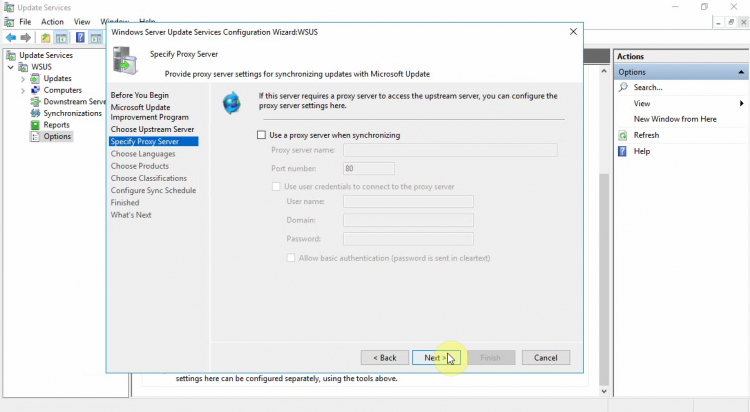
- Click Start Connecting to Connect in Upstream Server.

- Specify the Language for your Windows Updates.

- Specify the products that you want to update. I select Windows Server 2012 , Windows Server 20016 and 2019.

- Specify the type of the Windows updates to download.

- Configure when you want to synchronize the WSUS with the Windows Updates.

- Check the Begin initial synchronization.Click Next

- Click Finish.

- You can see the Synchronization Status from the Console
Until finish the synchronization let’s go to create the Group Policies to deploy the Windows updates in the Endpoints that you would like.
How to configure Group Policy for WSUS
The last step after finish the Installation and Configuration of WSUS is to create a Group Policy for the WSUS.
In the Group Policy configure from which Server will request the Windows Updates the Endpoint.
- Create a new Group Policy
- Go in Computer Configuration > Policies > Administrative Templates > Windows Components > Windows Update.
- Edit the Configure Automatic Updates with any of the options that match in your environment. In this scenario i select 3 — Automatic download and notify for install and 0-Every Day

- Edit the Specify intranet Microsoft update service location. You must enter the URL of the intranet server which is in type of http:<fqdn>:8350

- Now Apply the GPO in every Organization Unit which include the Endpoints that will be receive Windows Updates from WSUS
- Once apply the GPO in the Endpoints you will be ask how can identify that the GPO apply and it’s sure that the Endpoint will retrieve Windows Updates from WSUS?
- One way is to open Server Manager — — Local Server
- Verify that in the Windows Updates says Download Windows updates only using managed updating service

- The other way is to open the registry
- Go in HKLM\SOFTWARE\Policies\Microsoft\Windows\WindowsUpdate.

How to configure WSUS Computer Groups
Probably you will have Server , Workstations and different OS in your environment.
To target the Updates for the different OS and type of Endpoints you can create the Computer Groups.
The hierarchy depends from your infrastructure.
I will show you only how can create the Computer Group and add the Endpoints in the Group
- Right click in All Computers and select Add Computer Group

- Type the name of the Computer Group. Click Add

- Now right click on Updates and select New update View

- Tick the Updates are for a specific product
- Click in any produc.

- Select only the product that you prefer. For this scenario i select Windows 10

- Type the name of the View and click OK
- Now click on the new Update View
- Change the Filter to Unapproved

- Select the Windows Updates that you want to deploy in your Windows 10 Endpoints (in my example)
- As you can see i use the search to find the Update for the specific version of Windows 10
- Right click select Approve

- Select the Computer Group and select Approve for Install.

That’s it! Now base on which Computer has in Group and the Group Policy Settings will be install the Windows Updates.
As you can see it’s very easy when you separate with the Groups the types of your Endpoints because you can target the specific Windows Updates for the specific group of Endpoints very quickly.
How to Automatic Approval Updates
It’s not the recommended option for all the Windows Updates but only for the Security Updates.
We must keep every time all our Servers with the latest Security Updates to avoid any security hole in our systems.
It’s not easy to keep the process manual when you have hundred of Servers to maintain.
For this reason i will show you how can approve automatic all the Security Updates for your Windows OS
- Open the WSUS
- Click in the Options
- From the right side Select Automatic Approvals

- Click in the New Rule

- Tick the first 2 Options

- Now click in Any Classification

- Select only the Security Updates. Click OK

- Select any Product

- Select only the product that you want to automatic approve the Security Updates. For the scenario i select Windows Server 2016.Click OK

- Click in all computers

- Select the Computer Group which include the specific Servers or Workstations with the appropriate Windows OS. Click OK

- If you have already download the Windows Updates then you must click in Run Rule to approve all the Security Updates.
- You don’t need to click in Run Rule for the next updates that will download or if you don’t have start to download any Windows update yet.

- Now you can easily create a new Update View which will include only the Security Updates to verify that all has been approved

Remember that until now we have only Automatic Approve all the Security updates.
If you want to proceed with automatic installation of the Security Updates you must change your Group Policy settings.
Read the paragraph How to configure Group Policy for WSUS to understand which settings must be change in Group Policy
To be honest it’s not very easy process because must be dedicate specific time to find and approve the Windows Updates for every Category.
But remember that this will happened only once and create an automate procedure while you have centralize your Windows Updates and know exactly which Endpoints are out of Date and must be Updated.
Have a nice weekend !!
Be Safe
In this article, we are going to learn the ‘Complete Guide to Install and Configure WSUS Server 2016 (Windows Server Update Services)’. Windows Server Update Services (WSUS), formerly known as Software Update Services, is a computer program and network service developed by Microsoft Corporation that enables administrators to distribute Microsoft-issued updates and hotfixes for Microsoft products in a corporate environment.
Before proceeding with installation and configuration, make sure your machine meets the following requirements:
- The static IP address configured.
- Turned off the Windows firewall.
- The latest security updates from Microsoft are installed.
- The Internet connection is working.
Follow the below Steps To Install and Configure WSUS Server 2016 (Windows Server Update Services):
Step 1. Open Server Manager.
Step 2. Click Add Role and Features.
Step 3. Read the important requirements and try to meet them (this includes a strong password for the administrator account, stable IP configuration, and installation of the latest security updates). Click next to continue.
Step 4. Choose Role-based or Feature-based installation and click Next.
Step 5. Select a server from the server pool, and click next.
Step 6. Select the destination server for Windows Server Update Services from the server pool and click Next.
Step 7: Click Add Features
Step 8: Click Next
Step 9: Click Next
Step 10: Select WID Connectivity & WSUS Services then Click on Next.
Step 11: On the Content location selection page, type a valid location to store the updates. For example, you can create a folder named WSUS at the root of Private Drive D for this purpose and type WSUS as a valid location.
Step 12: The Web Server Role (IIS) page opens. Review the information, and then click Next.
Step 13: In select the role services to install for Web Server (IIS), retain the defaults, and then click Next.
Step 14: Click Install and the installation will begin which can take 10 – 15 minutes to complete.
Step 15: Now you can see the WSUS installation process is completed.
Also Read – Step by Step Configure WDS Server (Windows Deployment Services) On Windows Server 2016
Configuring WSUS Server:
Once the WSUS installation is complete, in the summary window on the Installation progress page, click Launch Post-Installation tasks. The text changes, requesting: Please wait while your server is configured. When the task has finished, the text changes to Configuration successfully completed. Click Close.
Step 1: Open your server manager dashboard, Click Tools -> Windows Server Update Services
Step 2: Click Next
Step 3: Click Next
Step 4: Select Synchronize From Microsoft Update or another server & click on Next.
Step 5: If you have a proxy server in your network, configure the proxy settings otherwise click Next
Step 6: Click Start Connecting to connect to the upstream server of Microsoft
Step 7: Select language and click Next.
Step 8: Select the product you need to download updates for. Click Next.
Step 9: Select the type of updates and click Next
Step 10: Select Synchronize manually and click Next. You can also set up an automatic schedule for synchronization.
Step 11: Click Next.
Step 12: Click Finish.
As you can see above we have successfully Configure WSUS Server 2016. open update service and click on synchronizing.
WSUS Update Snapshot:-
Also Read – Tips For Troubleshooting WSUS Client That Are Not Reporting To The WSUS Server
That’s all, In this article, we have explained the Complete Guide to Install and Configure WSUS Server 2016 (Windows Server Update Services). I hope you enjoy this article. If you like this article, then just share it. If you have any questions about this article, please comment.
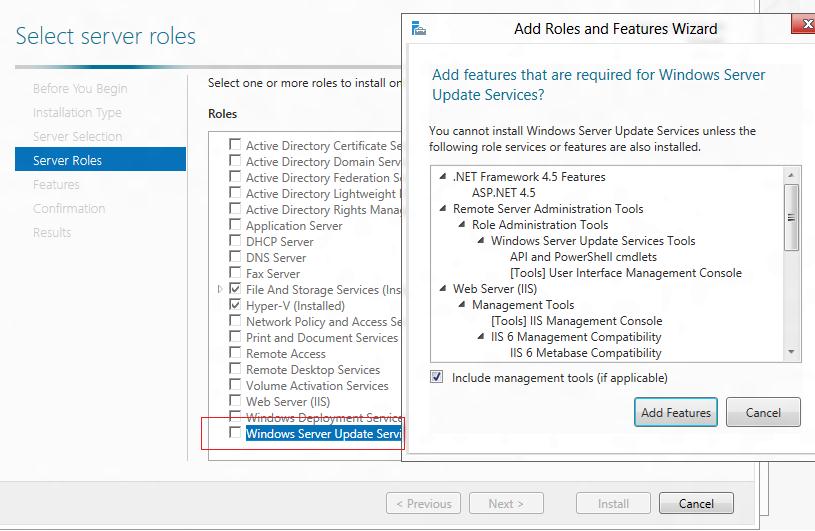
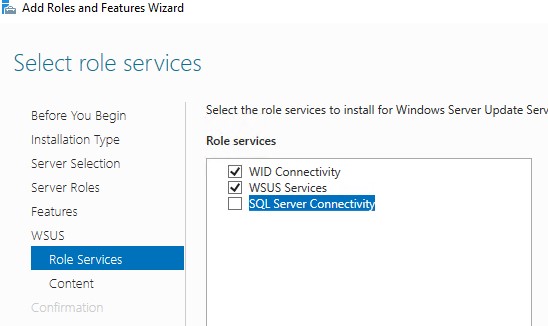
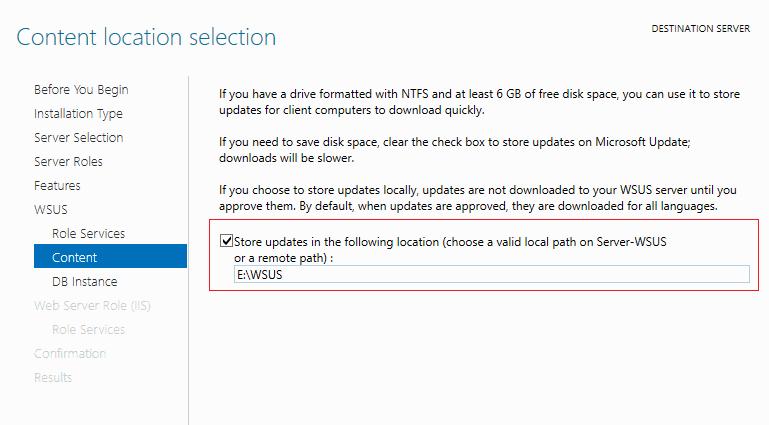
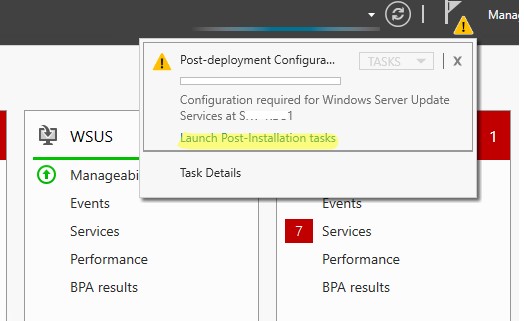
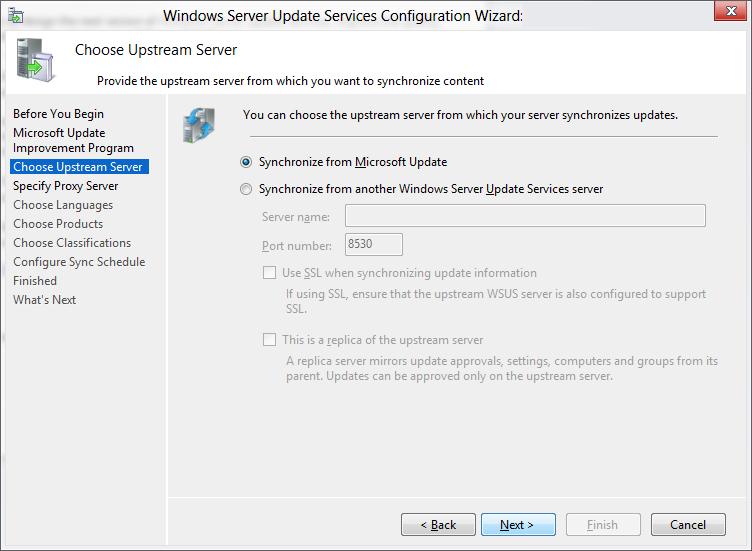
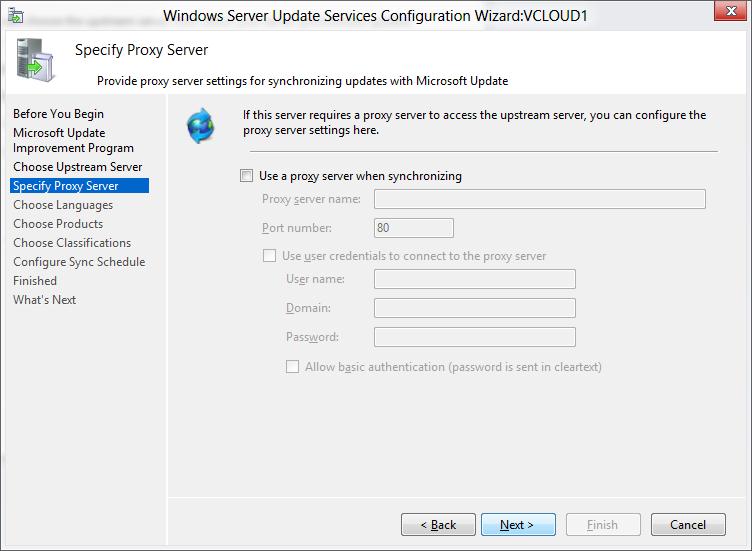
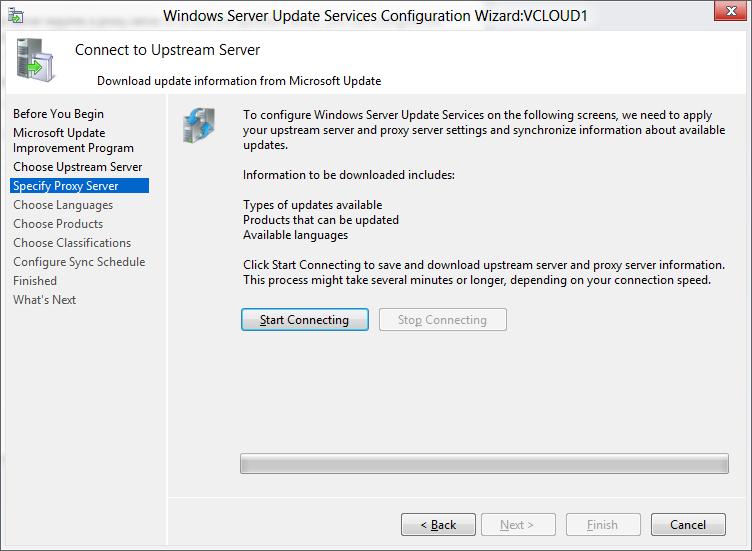
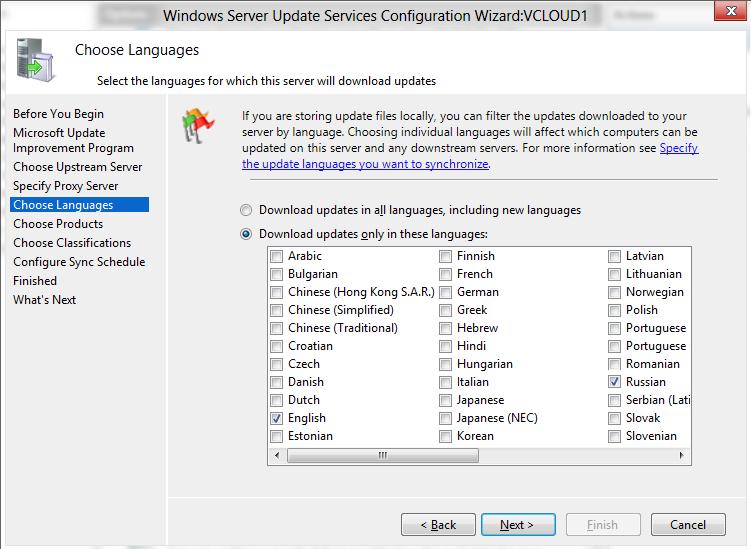
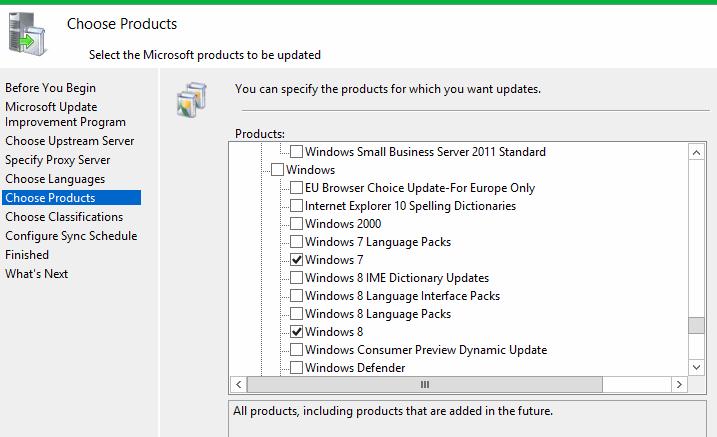
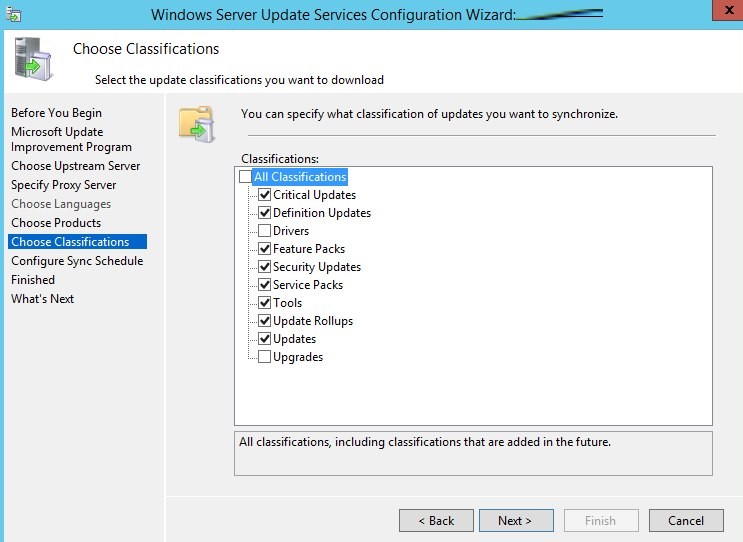
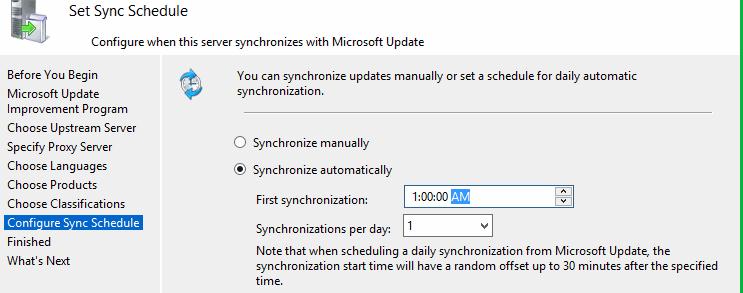
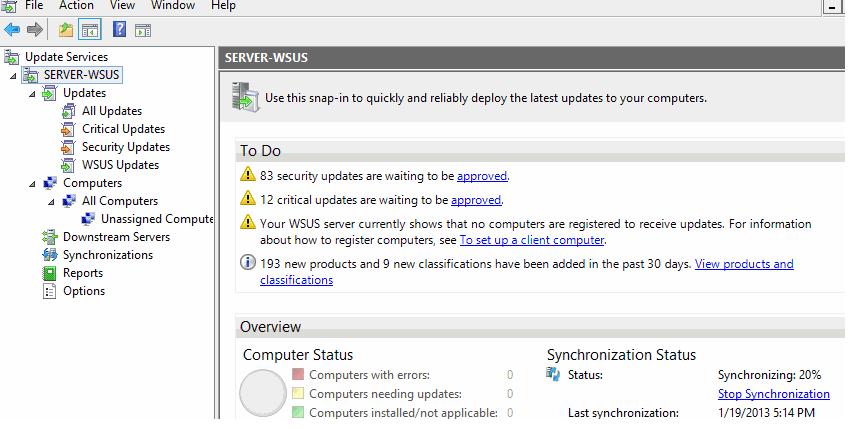
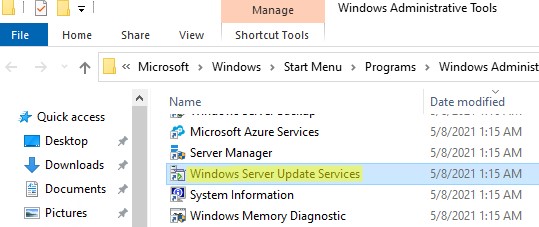
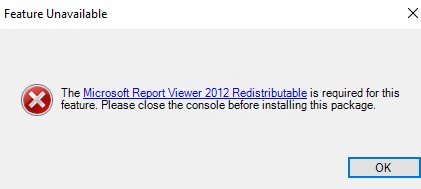
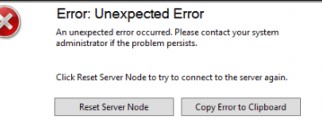 Для решения проблемы нужно добавить RAM на сервер и оптимизировать настройки пула IIS в соответствии с рекомендациями в статье. Воспользуетесь такими командами:
Для решения проблемы нужно добавить RAM на сервер и оптимизировать настройки пула IIS в соответствии с рекомендациями в статье. Воспользуетесь такими командами: